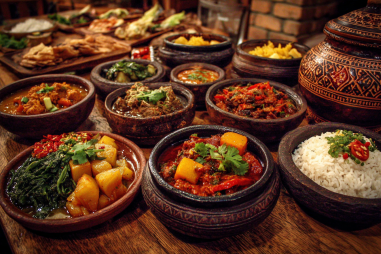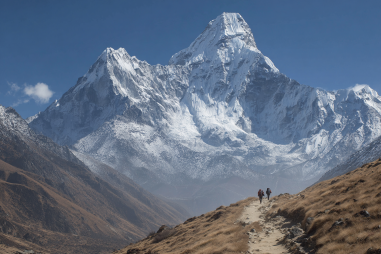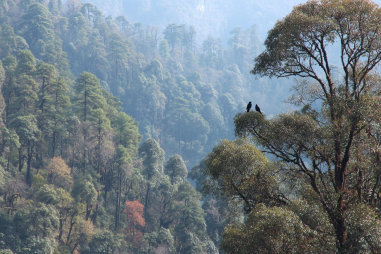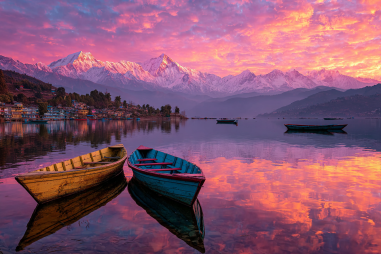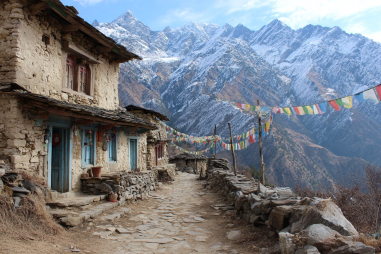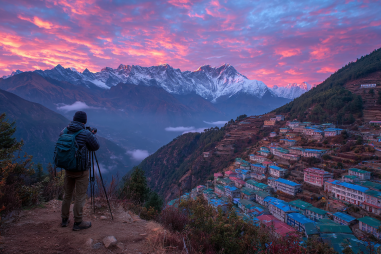Planning a trip to Bhaktapur, one of Nepal’s most enchanting ancient cities, requires a good understanding of its weather and seasonal changes. Nestled in the Kathmandu Valley, Bhaktapur boasts rich cultural heritage alongside beautiful landscapes. Knowing what kind of climate to expect during your visit, the best times to explore this historical gem, and what to pack can make your experience much more enjoyable. This guide will take you through Bhaktapur’s climate patterns, the best months for travel, and some useful travel tips to help you make the most of your trip.
Overview of Bhaktapur Climate
Bhaktapur experiences a temperate climate influenced by its elevation of approximately 1,400 meters (4,600 feet) above sea level. The city enjoys four distinct seasons: spring, summer (monsoon), autumn, and winter. Temperatures generally remain mild throughout the year, but humidity and rainfall vary, especially with the presence of the monsoon during the summer months. Understanding the overall weather is essential, as it impacts sightseeing opportunities, outdoor activities, and local festivities in this culturally rich city.
Seasonal Weather Patterns
Bhaktapur’s climate follows a fairly predictable seasonal rhythm, which can be broken down as follows:
Spring (March to May)
Spring in Bhaktapur is a wonderful time to visit. Temperatures range from the mid-50s to the mid-70s Fahrenheit (around 13°C to 24°C). The weather is generally pleasant with blooming flowers and fresh greenery. Rainfall during this period is minimal, and the days are longer with plenty of sunshine—ideal for exploring the city’s vibrant squares and ancient temples.
Summer and Monsoon (June to August)
Summer brings warmer temperatures, ranging from 65°F to 85°F (18°C to 29°C). However, this season is mostly marked by the monsoon, which typically arrives in June and lasts through August. Heavy rainfall and increased humidity are common, often causing disruptions in outdoor plans. While the rains nourish the surrounding landscapes making them lush and green, the continuous wet weather can make sightseeing a bit challenging during this time.
Autumn (September to November)
Autumn is considered the best season to visit Bhaktapur. The monsoon rains taper off by September, leading to clear skies, lower humidity, and moderate temperatures ranging from 55°F to 75°F (13°C to 24°C). Visibility improves spectacularly, offering breathtaking views of the Himalayan range on clear days. This period is also a festive season in Bhaktapur, making it a culturally enriching time to visit.
Winter (December to February)
Winter temperatures in Bhaktapur can dip to around 35°F to 60°F (2°C to 15°C). The weather is cool and dry with crisp air, especially in the mornings and evenings. Snow is rare but possible in the surrounding higher elevations. Though winter days can be chilly, the skies are generally clear, making it a peaceful time to explore historical sites with fewer tourists around.
Best Months for Travel
When planning your trip to Bhaktapur, aim to visit during the shoulder seasons, which offer a perfect blend of pleasant weather and vibrant cultural life:
- March to May (Spring): Enjoy mild temperatures, blooming flora, and minimal rain – great for sightseeing and photography.
- September to November (Autumn): Clear skies, comfortable temperatures, and lively festivals create an ideal setting for travel.
While winter is suitable for travelers who prefer quieter experiences and don’t mind cooler temperatures, the monsoon months of June through August are generally less favorable due to heavy rains and potential travel disruptions.
What to Pack for Each Season
Packing appropriately will ensure your comfort while exploring the charming streets and ancient temples of Bhaktapur regardless of the season.
Spring
- Light layers such as long-sleeved shirts and light jackets
- Comfortable walking shoes for exploring streets and stairs
- Sunglasses and sunscreen for sunny days
Summer and Monsoon
- Waterproof rain jacket or poncho
- Quick-dry clothing and waterproof footwear
- Umbrella and insect repellent
- Light, breathable clothes for humid conditions
Autumn
- Layered clothing including sweaters or light jackets for cool mornings and evenings
- Comfortable shoes for walking on uneven terrain
- Hat and sunglasses to protect from the bright sun
Winter
- Warm layers, including thermal wear and insulated jackets
- Gloves, scarves, and hats to protect against the cold
- Comfortable but warm footwear with good grip
How Weather Affects Festivals and Activities
Bhaktapur is renowned for its rich cultural heritage and hosts numerous festivals throughout the year. The weather significantly influences these celebrations and outdoor activities.
During the autumn season, festivals like Bisket Jatra and Indra Jatra are conducted in largely clear weather, allowing visitors to fully immerse in the vibrant cultural displays. The pleasant climate supports outdoor gatherings, processions, and markets. Similarly, springtime festivals benefit from mild temperatures and blooming surroundings, enhancing the festive atmosphere.
Conversely, the monsoon season can affect the scheduling of outdoor events and reduce accessibility to some hiking trails or rural excursions near Bhaktapur. If you visit during this time, indoor cultural sites, museums, and local artisanal shops provide compelling alternatives.
Travel Tips for Different Weather
To make the best of your trip regardless of the season, consider these helpful travel tips:
- In the Spring and Autumn: Start your days early to avoid crowds and enjoy cooler temperatures. Carry a reusable water bottle and comfortable walking shoes.
- During the Monsoon: Keep flexible travel plans and prepare for sudden weather changes. Always have waterproof coverings for electronics and a reliable umbrella.
- In Winter: Dress in warm layers and limit exposure during the coldest parts of the day. Morning visits to temples and squares are rewarding, but afternoons may become chilly.
- Regardless of season, staying hydrated and protecting yourself from the sun is important due to Bhaktapur’s altitude.
- Engage with local guides who know the best times and places to visit during different weather conditions.
With the right preparation and understanding of Bhaktapur’s weather, your journey through this historic city will be comfortable and unforgettable. From vibrant festivals under clear skies to peaceful winter strolls through ancient courtyards, each season offers its own unique charm to the traveler willing to explore.


